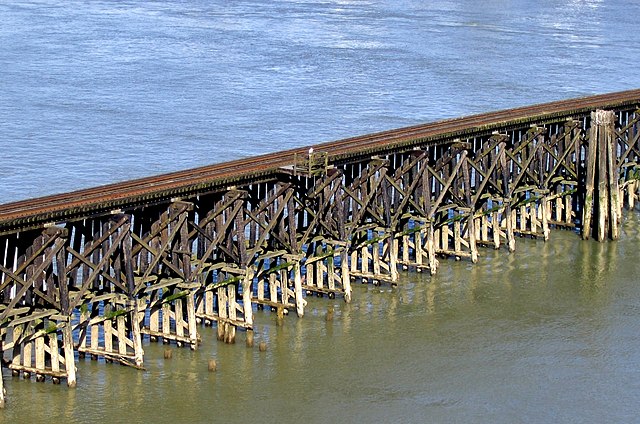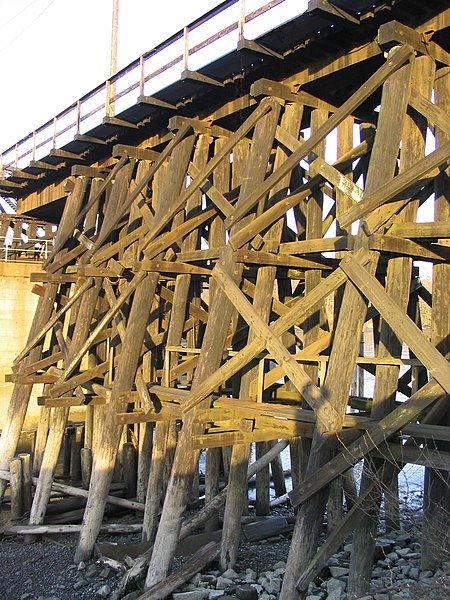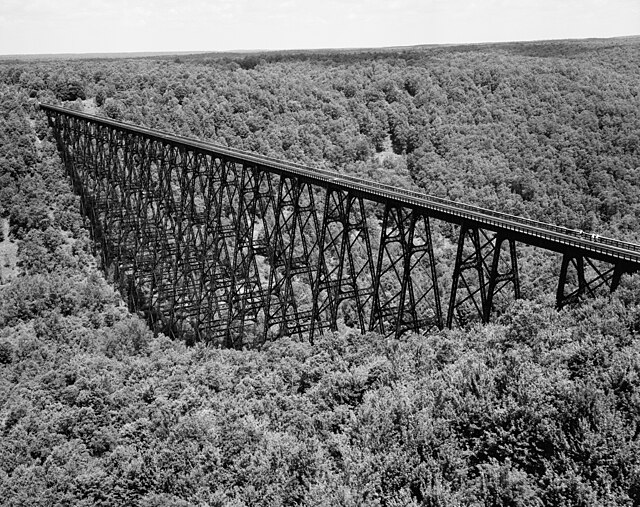A trestle bridge is a bridge composed of a number of short spans supported by closely spaced frames. A trestle is a rigid frame used as a support, historically a tripod used to support a stool or a pair of isosceles triangles joined at their apices by a plank or beam such as the support structure for a trestle table. Each supporting frame is a bent. A trestle differs from a viaduct in that viaducts have towers that support much longer spans and typically have a higher elevation.
Trestles are useful as approaches to bridges over marshes and shallows.
Trestle of wooden posts, beams, and diagonal braces
Kinzua viaduct over the Kinzua Creek valley in Pennsylvania
Interurban train trestle, completed after the 1915 Galveston Hurricane
A viaduct is a specific type of bridge that consists of a series of arches, piers or columns supporting a long elevated railway or road. Typically a viaduct connects two points of roughly equal elevation, allowing direct overpass across a wide valley, road, river, or other low-lying terrain features and obstacles. The term viaduct is derived from the Latin via meaning "road", and ducere meaning "to lead". It is a 19th-century derivation from an analogy with ancient Roman aqueducts. Like the Roman aqueducts, many early viaducts comprised a series of arches of roughly equal length.
The 1812 Laigh Milton Viaduct in Ayrshire – the oldest surviving railway bridge in Scotland
The Ouse Valley Viaduct in Sussex, England
The Millau Viaduct
"Deansgate Locks" bars under Deansgate Metrolink station in Manchester.








